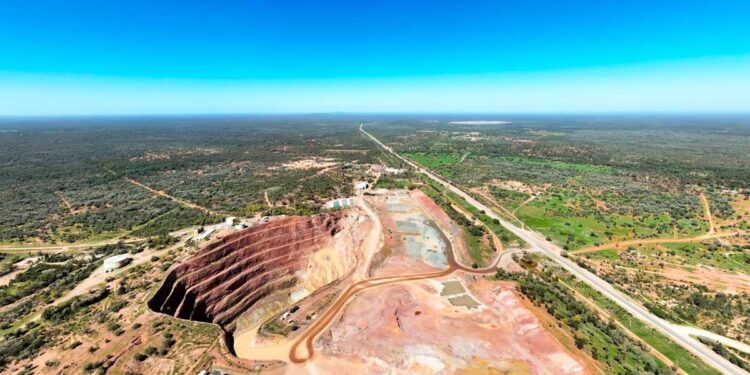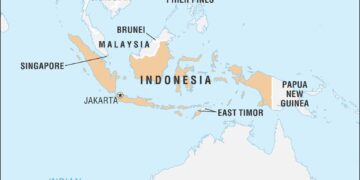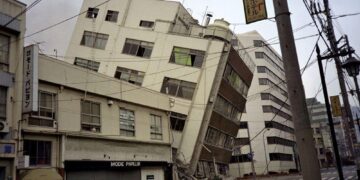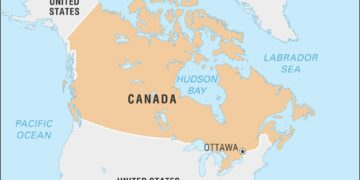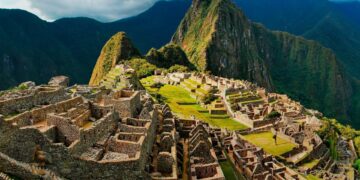In a significant escalation of social unrest in Peru, protesters have effectively blocked a major copper transport route utilized by some of the country’s largest mining operations, disrupting the flow of one of the nation’s key exports. The demonstrations, fueled by widespread discontent over environmental concerns and the socioeconomic impacts of mining activities, mark a pivotal moment in the ongoing struggle between local communities and the mining sector. As tensions rise, authorities face mounting pressure to address the grievances of protesters while balancing the nation’s economic dependence on mining revenues. This disruption comes at a critical juncture for Peru, a leading global producer of copper, and raises questions about the future of mining in the region amidst calls for greater accountability and sustainability.
Protesters Escalate Tensions by Disrupting Key Copper Supply Route for Major Mining Companies
In a bold escalation of their demands, demonstrators in Peru have taken to the roads, effectively blocking vital routes used by major copper mining companies. This disruption centers on a key corridor that facilitates the transport of copper from mines to processing plants and shipping ports, impacting operations for international firms such as Southern Copper and Freeport-McMoRan. The protesters, representing a coalition of local communities and environmental activists, are voicing their frustrations over land rights, environmental degradation, and inadequate compensation for mining activities that have historically benefited foreign investors more than local residents.
The situation has led to significant supply chain concerns, prompting industry representatives to call for urgent dialogue to resolve the escalating conflict. As tensions mount, the prospect of extended disruptions looms, raising questions about the stability of Peru’s mining sector. Key points from the protests include:
- Environmental Protection: Demands for better regulations on mining waste management.
- Community Rights: Advocacy for land ownership and equitable distribution of mining profits.
- Local Employment: Calls for increased job opportunities for local residents within the mining sector.
Impact on Peru’s Mining Sector: Economic Consequences and Environmental Considerations
The ongoing protests in Peru have significantly disrupted the copper supply chain, profoundly affecting the mining sector, which is one of the country’s most vital economic engines. By blocking key transportation routes, demonstrators have brought operations to a standstill, causing large mining companies to face potential production losses. In 2022, copper exports represented approximately 60% of Peru’s total mineral exports, showcasing the economic weight of this sector. An abrupt halt in copper mining not only threatens the revenue of mining firms but also impacts local economies reliant on jobs and services linked to these operations.
Moreover, the environmental aspect of the protests cannot be overlooked. The disturbances raise critical concerns regarding sustainable mining practices and community rights. As the demand for copper continues to soar, balancing economic benefits with ecological stewardship becomes increasingly challenging. The consequences of mining-related activities often lead to deforestation, water pollution, and displacement of local communities. Stakeholders must consider:
- Community Engagement: Ensuring that local voices are heard in mining negotiations.
- Environmental Regulations: Strengthening policies to mitigate the environmental impacts of mining.
- Economic Diversification: Reducing reliance on mining through investment in other sectors.
| Economic Impact | Environmental Impact |
|---|---|
| Job losses in mining sector | Increased pollution risks |
| Decline in export revenues | Habitat destruction |
| Reduced investment in infrastructure | Water resource depletion |
Recommendations for Stakeholder Dialogue to Address Community Grievances and Ensure Sustainable Practices
To effectively address community grievances and promote sustainable practices within the mining sector, a proactive approach to stakeholder dialogue is essential. Engaging local communities in transparent discussions can foster trust and collaboration, ultimately leading to more equitable outcomes. Key strategies for initiating meaningful dialogue include:
- Regular Town Hall Meetings: Establish a consistent schedule for community meetings where stakeholders can openly discuss concerns and expectations.
- Community Advisory Panels: Form panels comprising community members to provide direct input on mining activities and environmental practices.
- Feedback Mechanisms: Implement accessible channels for community members to voice grievances and provide suggestions, ensuring their feedback is taken seriously.
Additionally, it is critical that mining companies commit to integrating sustainable practices into their operations. This not only helps to minimize environmental impact but also aligns with the community’s long-term interests. Effective measures may include:
- Impact Assessments: Regularly conduct environmental and social impact assessments to understand the effects of mining activities.
- Local Employment Initiatives: Prioritize hiring local residents to promote economic growth within the community.
- Investment in Infrastructure: Collaborate with local governments to enhance community infrastructure, thereby addressing broader socio-economic issues.
By implementing these recommendations, mining companies can bridge the gap between their operations and community expectations, paving the way for sustainable development and reducing the likelihood of protests similar to those recently witnessed in Peru.
Concluding Remarks
In conclusion, the ongoing protests in Peru underscore the growing tensions between local communities and large mining companies over environmental concerns and resource management. As demonstrators continue to block key transportation routes for copper shipments, the situation highlights the complexities of balancing economic interests with social and environmental responsibilities. The developments in this volatile context will undoubtedly have significant implications for the mining industry and the Peruvian economy as a whole. Stakeholders on all sides will need to navigate these challenges carefully in the coming days, aiming for dialogue and solutions that address the fundamental issues at play. As the protests unfold, the world will be watching closely to see how this critical chapter in Peru’s mining narrative evolves.

